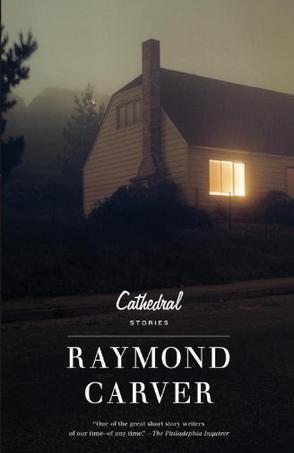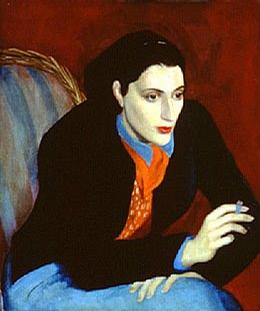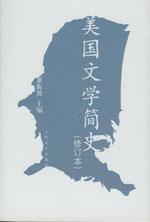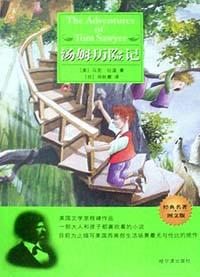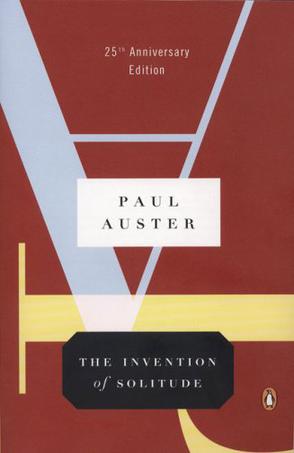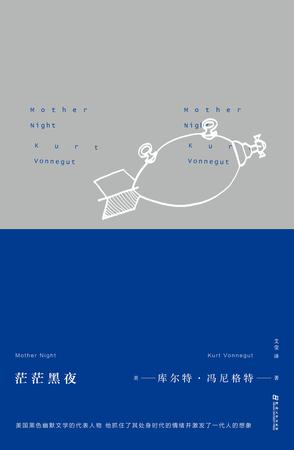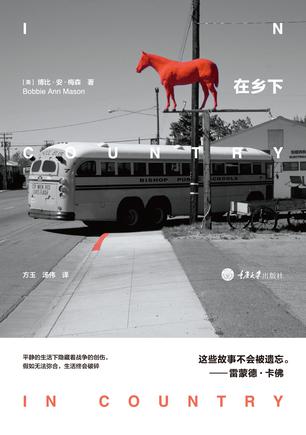欢迎来到相识电子书!
标签:美国文学
-
去吧,摩西
本书是“福克纳文集”之一。《去吧,摩西》是福克纳最负盛名的作品之一,也是“约克纳帕塔法世系”的重要构成部分,美国南方庄园主麦卡斯林与女奴生有一女,后又与这个女儿生下一子泰瑞乐,泰瑞乐后来娶了另一位庄园主布钱普的女奴谭尼,其子嗣都以布钱普为姓氏。麦卡斯林的外孙女则嫁给了爱德蒙家兹。全书写的就是这三个姓氏的子孙间的复杂关系,最浓墨重彩的人物是麦卡斯林的孙艾萨克,他在黑人猎手的带邻下自小参加猎熊活动,长 -
Cathedral
Feathers Chef's House Preservation The Compartment A Small, Good Thing Vitamins Careful Where I'm Calling From The Train Fever The Bridle Cathedral -
睡谷的传说
《睡谷的传说》简介:华盛顿·欧文(1783-1859)素有“美国短篇小说之父”的美称。《睡谷的传说》收集了欧文八个最受欢迎的短篇小说。如《瑞普·凡·温克尔》、《鬼新郎》、《闹鬼的屋子》等等。故事充满惊险和神秘色彩,内容包含探险、寻宝、海盗和爱情等。集文学性、娱乐性和休闲性于一本。 -
危险的夏天
海明威文集。 海明威对西班牙斗牛有特别的爱好。1959年他再次去西班牙,回国后应《生活》杂志约稿所投去的稿子经过编辑的合理删节,保留下最精彩的部分,于是便有了这本《危险的夏天》。书中有海明威回忆他与西班牙一些老朋友的友谊,有对于两位正非常走红的年轻斗牛士英勇气概和高超技巧的赞扬,有对于西班牙斗牛非常内行和生动的描写,以及这位著名作家对死亡全神贯注的研究。本书和出版于1932年的《死在午后》是了解西班牙斗牛和海明威个性的好材料。 -
美国文学的第二次繁荣
20世纪的二三十年代是一个“文化沸腾”时期。这短短的二十年涵盖了美国文学中最丰富的部分,文坛上大匠如群,佳作叠出。七个诺贝尔文学奖获得者在此期间发表了他们的主要作品:作家刘易斯、赛珍珠、福克纳、海明威、期坦贝克,剧作家奥尼尔和诗人T.S.艾略特。正是这些文学家,以及许许多多与他们一起活跃于二三十年代美国文坛的作家和诗人,如费茨杰拉德、安德森、庞德、弗洛斯特、多斯·帕索斯、法雷尔等,引导着美国文学走向真正的成熟和真正的繁荣,共同抒写了这一美国思想史和文学史上不可或缺的主要章节。 《美国文学的第二次繁荣》是一部专注于这一非常时期美国文学的断代史论著,视角新颖,内容详昼,对促成这一时期美国文学繁荣的社会意识和文化思潮进行了深入的讨论,在此基础上美国文学的演变过程、艺术特征、文化特性和美学价值作了全面而又系统的介绍与阐释,并对这个迅速变迁和文学实验的时代中涌现出的一些具有代表性的优秀文学作品,进行了细致的文本分析,以便我们能从文学创造性地再现的故事中,更深刻地了解现代社会到来时发生在美国的一场社会巨变、文化巨变和认识巨变。 -
美国文学简史 修订本
目 次 第一章 殖民地时期 第一节 概述 ………………………………………………l 印第安人的生活和文化(2) 殖民地时期的文学 (5) 独立战争期间的革命文学(10) 第二节 富兰克林、潘恩和杰弗逊的散文………………13 本杰明·富兰克林(13) 托马斯·潘恩(18) 托马 斯·杰弗逊(21) 第三节 资产阶级革命诗人菲利普·弗瑞诺……………24 第二章 独立革命到南北战争时期 第一节 概述………………………………………………28 时代背景(30) 浪漫主义文学的产生和发展(32) 废奴运动与废奴文学(36) 第二节 前期浪漫主义……………………………………39 华盛顿·欧文(39) 詹姆斯·费尼莫·库柏(44) 威 廉·柯伦·布莱恩特(50) 埃德加·爱伦·坡(54) 第三节 后期浪漫主义……………………………………58 拉尔夫·华尔多·爱默生(58) 亨利·大卫·梭罗 (64) 亨利·华兹渥斯·朗费罗(67) 詹姆斯·罗塞 尔·洛威尔(70) 奥列佛·温德尔·赫姆士(72) 纳 撒尼尔·霍桑(73) 赫尔曼·梅尔维尔(81) 第四节 废奴文学…………………………………………85 哈里叶特·比彻·斯托(86) 理查德·希尔德烈斯 (92) 约翰·格林里夫·惠蒂埃(94) 第五节 黑人文学…………………………………………96 黑人奴隶歌曲(97) 惠特莱和威伯(101) 霍顿、 哈珀和惠特菲尔德(103) 布朗和德兰尼(106) 弗莱德里克·道格拉斯(108) 第六节 瓦尔特·惠特曼 ………………………………110 第三章 南北战争到第一次世界大战时期 第一节 概述 ……………………………………………125 现实主义文学的发展(126) 现实主义文学的几个 特点(132) 第二节 豪威尔斯、詹姆斯与华顿 ……………………136 威廉·豪威尔斯(136) 亨利·詹姆斯(139) 伊迪 丝·华顿(148) 第三节 马克·吐温 ……………………………………150 早年的生活和创作(150) “镀金时代”的讽刺者 (153) 后期的反帝作品(160) 第四节 弗兰克·诺里斯等现实主义小说家 …………163 赫姆林·加兰(164) 弗兰克·诺里斯(166) 斯蒂 芬·克莱恩(169) 欧·亨利(172) 第五节 黑人文学 ………………………………………175 保尔·劳伦斯·邓巴(177) 查尔斯·契斯纳特(181) 威·爱·伯·杜波依斯(185) 第六节 杰克·伦敦 ……………………………………190 早年的劳动生活(191) 资本主义社会的叛逆者 (192) “黑幕揭发者”(200) 第七节 诗歌创作 ………………………………………202 乔·希尔等的工人歌谣(203) 锡德尼·拉涅尔 (206) 艾德温·马卡姆(208) 威廉·沃恩·穆迪 (209) 艾米莉·狄更生(210) 第四章 第一次世界大战到第二次世界大战 第一节 概述 ……………………………………………216 第二节 诗歌创作(一) …………………………………222 序论(222) 新英格兰诗人(223) 芝加哥诗人 (230) 意象派诗歌(238) 庞德(241) 艾略特 (249) 诗歌创作(二)……………………………………………261 斯蒂文斯(261) 威廉斯、穆尔与肯明斯(265) 克 莱恩、麦克利什与杰弗斯(272) “逃亡者”集团 (282) 第三节 戏剧(一) ………………………………………290 美国现代戏剧与奥尼尔(290) 奥尼尔剧作的发展 (295) 美国现代悲剧的创造者(304) 戏剧(二)…………………………………………………310 酝酿时期——突破商业化(310) 二十年代——向 心理深度开拓(315) 三十年代——向社会制度挑 战(320) 第四节 德莱塞、刘易斯、安德森和凯瑟 ……………336 德莱塞(337) 刘易斯(348) 安德森(359) 凯瑟 (366) 第五节 海明威、菲兹杰拉德和沃尔夫 ………………371 海明威的生平(372) 《永别了,武器》(373) 《丧 钟为谁而鸣》(376) 《老人与海》(379) 海明威的 艺术风格(381) 弗·司各特·菲兹杰拉德(384) 《人间天堂》(385) 《了不起的盖茨比》(387) 《夜 色温柔》(392) 托马斯·沃尔夫(394) 第六节 多斯·帕索斯、法雷尔和斯坦贝克…………398 约翰·多斯·帕索斯(400) 詹姆斯·托·法雷尔 (408) 约翰·斯坦贝克(409) 《人与鼠》(410) 《愤怒的葡萄》(412) 《烦恼的冬天》(418) 第七节 福克纳与南方小说……………………………422 威廉·福克纳(425) 罗伯特·佩恩·沃伦(446) 凯 瑟琳·安·波特(451) 第八节 黑人文艺复兴及其影响………………………455 黑人文艺复兴(455) “新黑人”(456) “艺术还是 宣传”(457) 哈莱姆派(458) 约翰逊和图玛 (459) 麦凯(461) 卡伦(464) 休斯(467) 舒 拉、邦当、赫斯顿和布朗(474) 戴维斯、托尔森、海 登和沃克(476) 赖特(478) 第九节 理论批评………………………………………485 自由主义的批评(486) “新人道主义”(488) 左 翼文学批评(489) 弗洛伊德精神分析学的影响 (492) “新批评派”(495) 第五章 第二次世界大战以后的文学 第一节 概述……………………………………………498 第二节 现实主义和自然主义小说……………………505 凯鲁亚克(514) 梅勒(516) 厄普代克(520) 欧 茨(524) 第三节 后现代派小说…………………………………528 纳博科夫(533) 冯尼格(536) 海勒(540) 霍克 斯(545) 巴斯(546) 第四节 南方小说………………………………………548 韦尔蒂(550) 麦卡勒斯(553) 奥康纳(555) 斯 泰伦(558) 第五节 犹太小说………………………………………561 辛格(563) 马拉默德(566) 贝娄(569) 罗思 (574) 第六节 黑人小说………………………………………577 埃利森(580) 鲍德温(584) 威廉斯(586) 盖恩 斯(588) 莫瑞森(589) 第七节 诗歌……………………………………………591 黑山派和克里利(593) 垮掉派和金斯堡(595) 自白派和洛威尔(598) 新超现实主义和勃莱 (602) 黑人诗歌(605) 第八节 戏剧……………………………………………610 威廉斯(614) 密勒(620) 阿尔比(624) 黑人戏剧(628) 附录 越战以后的文学 第一节 概述……………………………………………639 第二节 现实主义小说…………………………………647 第三节 少数民族小说…………………………………666 第四节 女性小说………………………………………697 第五节 后现代派小说…………………………………704 第六节 诗歌……………………………………………715 第七节 戏剧……………………………………………726 结 语 …………………………………………………733 索 引……………………………………………………734 后 记……………………………………………………764 -
平原上的城市
《平原上的城市》是美国作家科马克·麦卡锡著名的“边镜三部曲”的最后一部。前两部小说《骏马》和《穿越》中的主人公约翰·格雷迪和比利将又一次去面对充满记忆的过去和不确定的未来。小说通过一个带有悲剧色彩的爱情故事片为两个主人公找到了各自的归属。恢宏的场景和史实般的语言令读者再一次领略到这位经典文学作家的魅力。 -
押沙龙,押沙龙!
《押沙龙,押沙龙!》是福克纳最重要,也是最复杂、深奥,最具史诗风格的一部作品。它讲述的是美国南方一个家庭从1860年到1910年左右所经历的激烈的分崩离析的故事,深刻地表现了人与人、人与自己内心的种种冲突,触及与人类境遇有关的诸多带普遍性的问题。小说叙述方式独特;书中各人物从不同的角度,带着不同的主观感情“解释”过去,但共同体现出整部作品的悲剧格调。 本书书名源自《圣经》典故,书中描述的 -
Love and Death in the American Novel
A retrospective article on Leslie Fiedler in the New York Times Book Review in 1965 referred to Love and Death in the American Novel as "one of the great, essential books on the American imagination . . . an accepted major work." This groundbreaking work views in depth both American literature and character from the time of the American Revolution to the present. From it, there emerges Fiedler's once scandalous--now increasingly accepted--judgment that our literature is incapable of dealing with adult sexuality and is pathologically obsessed with death. -
小大亨
这是一部被称为 “最伟大的美国讽刺小说”的“史诗式作品”,它以喜剧的笔法描写11岁商业天才范森特,及其创建囊括木材加工、矿产、出版和酿造业的大型企业的讽刺故事。 -
The Invention of Solitude
"One day there is life . . . and then, suddenly, it happens there is death". So begins THE INVENTION OF SOLITUDE, Paul Auster's moving and personal meditation on fatherhood. After the death of his own father, Auster discovers a 60-year-old family murder mystery that could account for the old man's elusive character. Later the book shifts from Auster's identity as son to his own role as father. -
觉醒
《觉醒》肖班以主人公艾德娜·庞特里耶的自我意识和性意识的觉醒为主题,大胆而又直率地从深层次探索了已婚女性的内心世界。这在当时的社会背景下无疑是惊世骇俗之举。《觉醒》被尊为美国妇女文学最早的代表性作品,成为女性文学的经典。《觉醒》为纯正的英语版本。 -
Of Mice and Men
Streetwise George and his big, childlike friend Lennie are drifters, searching for work in the fields and valleys of California. They have nothing except the clothes on their back, and a hope that one day they'll find a place of their own and live the American dream. But dreams come at a price. Gentle giant Lennie doesn't know his own strength, and when they find work at a ranch he gets into trouble with the boss's daughter-in-law. Trouble so bad that even his protector George may not be able to save him. -
A Lesson Before Dying
在线阅读本书 Book Description From the author of A Gathering of Old Men and The Autobiography of Miss Jane Pittman comes a deep and compassionate novel. A Lesson Before Dying is set in a small Cajun community in the late 1940s. Jefferson, a young black man, is unwitting party to a liquor store shootout in which three men are killed; the only survivor, he is convicted of murder and sentenced to death. Grant Wiggins, who left his hometown for the university, has returned to the plantation school to teach. As he struggles with his decision whether to stay or escape to another state, his aunt and Jefferson's godmother persuade him to visit Jefferson in his cell and impart his learning and his pride to Jefferson before his death. In the end, the two men forge a bond as they both come to understand the simple heroism of resisting — and defying — the expected. Ernest J. Gaines brings to this novel the same rich sense of place, the same deep understanding of the human psyche, and the same compassion for a people and their struggle that have informed his previous, highly praised works of fiction. A Lesson Before Dying is about the ways in which people insist on declaring the value of their lives in a time and place in which those lives count for nothing. It is about the ways in which the imprisoned may find freedom even in the moment of their death. As such, Gaines's novel transcends its minutely evoked circumstances to address the basic predicament of what it is to be a human being, a creature striving for dignity in a universe that often denies it. Amazon.com In a small Cajun community in 1940s Louisiana, a young black man is about to go to the electric chair for murder. A white shopkeeper had died during a robbery gone bad; though the young man on trial had not been armed and had not pulled the trigger, in that time and place, there could be no doubt of the verdict or the penalty. "I was not there, yet I was there. No, I did not go to the trial, I did not hear the verdict, because I knew all the time what it would be..." So begins Grant Wiggins, the narrator of Ernest J. Gaines's powerful exploration of race, injustice, and resistance, A Lesson Before Dying. If young Jefferson, the accused, is confined by the law to an iron-barred cell, Grant Wiggins is no less a prisoner of social convention. University educated, Grant has returned to the tiny plantation town of his youth, where the only job available to him is teaching in the small plantation church school. More than 75 years after the close of the Civil War, antebellum attitudes still prevail: African Americans go to the kitchen door when visiting whites and the two races are rigidly separated by custom and by law. Grant, trapped in a career he doesn't enjoy, eaten up by resentment at his station in life, and angered by the injustice he sees all around him, dreams of taking his girlfriend Vivian and leaving Louisiana forever. But when Jefferson is convicted and sentenced to die, his grandmother, Miss Emma, begs Grant for one last favor: to teach her grandson to die like a man. As Grant struggles to impart a sense of pride to Jefferson before he must face his death, he learns an important lesson as well: heroism is not always expressed through action--sometimes the simple act of resisting the inevitable is enough. Populated by strong, unforgettable characters, Ernest J. Gaines's A Lesson Before Dying offers a lesson for a lifetime. From Kirkus Reviews Two black men (one a teacher, the other a death row inmate) struggle to live, and die, with dignity, in Gaines's most powerful and moving work since The Autobiography of Miss Jane Pittman (1971). The year is 1948. Harry Truman may have integrated the Armed Forces, but down in the small Cajun town of Bayonne, Louisiana, where the blacks still shuffle submissively for their white masters, little has changed since slavery. When a white liquor- store owner is killed during a robbery attempt, along with his two black assailants, the innocent black bystander Jefferson gets death, despite the defense plea that I would just as soon put a hog in the electric chair as this.'' Hog. The word lingers like a foul odor and weighs as heavily as the sentence on Jefferson and the woman who raised him, his nannan'' (godmother) Miss Emma. She needs an image of Jefferson going to his death like a man, and she turns to the young teacher at the plantation school for help. Meanwhile, Grant Wiggins (the narrator) has his own problems. He loves his people but hates himself for teaching on the white man's terms; visiting Jefferson in jail will just mean more kowtowing, so he goes along reluctantly, prodded by his strong-willed Tante Lou and his girlfriend Vivian. The first visits are a disaster: Jefferson refuses to speak and will not eat his nannan's cooking, which breaks the old lady's heart. But eventually Grant gets through to him (a hero does for others''); Jefferson eats Miss Emma's gumbo and astonishes himself by writing whole pages in a diary--a miracle, water from the rock. When he walks to the chair, he is the strongest man in the courthouse. By containing unbearably painful emotions within simple declarative sentences and everyday speech rhythms, Gaines has written a novel that is not only never maudlin, but approaches the spare beauty of a classic. From School Library Journal/i> No breathless courtroom triumphs or dramatic reprieves alleviate the sad progress toward execution in this latest novel by the author of The Autobiography of Miss Jane Pittman (Bantam, 1982). The condemned man is Jefferson, a poorly educated man/child whose only crimes are a dim intelligence, being in the wrong place at the wrong time, and being black in rural Louisiana in the late 1940s. To everyone, even his own defense attorney, he's an animal, too dumb to understand what is happening to him. But his godmother, Miss Emma, decides that Jefferson will die a man. To accomplish just that, she brings Grant Wiggins, the teacher at the plantation's one-room school and narrator of the novel, into the story. Emotionally blackmailed by two strong-willed old ladies, Grant reluctantly begins visiting Jefferson, committing both men to the painful task of self-discovery. As in his earlier novels, Gaines evokes a sense of reality through rich detail and believable characters in this simple, moving story. YAs who seek thought-provoking reading will enjoy this glimpse of life in the rural South just before the civil rights movement. - Carolyn E. Gecan, Thomas Jefferson Sci-Tech, Fairfax County, VA Midwest Book Review Set in a small Cajun community in the late 1940's, A Lesson Before Dying is the heartbreaking and inspiring new audio about the friendship to two black men. One wrongly condemned to die and one who's persuaded to impart something of himself -- his learning and pride. Jefferson is an unwitting and innocent party to a liquor store shoot-out in which three men are killed; the only survivor, hi is convicted of murder and sentenced to death. Grant Wiggins, who left his hometown for the university has reluctantly returned to the plantation school to teach. As he struggles with his decision whether to stay or escape to another state, his aunt and Jefferson's godmother persuade him to visit Jefferson in his cell. In the end, the two men forge a bond as they both come to understand the simple heroism of resisting (and defying) the expected. Superb narration by Lionel Mark Smith and Toger Guenveur Smith. From Library Journal What do you tell an innocent youth who was at the wrong place at the wrong time and now faces death in the electric chair? What do you say to restore his self-esteem when his lawyer has publicly described him as a dumb animal? What do you tell a youth humiliated by a lifetime of racism so that he can face death with dignity? The task belongs to Grant Wiggins, the teacher of the Negro plantation school who narrates the story. Grant grew up on the Louisiana plantation but broke away to go to the university. He returns to help his people but struggles over "whether I should act like the teacher that I was, or like the nigger that I was supposed to be." The powerful message Grant tells the youth transforms him from a "hog" to a hero, and the reader is not likely to forget it, either. Gaines's earlier works include A Gathering of Old Men ( LJ 9/83) and The Autobiography of Miss Jane Pittman (Bantam, 1982). BOMC and Quality Paperback Book Club alternate selections; previewed in Prepub Alert, LJ 12/92. - Joanne Snapp, Randolph-Macon Coll. , Ashland, Va. From AudioFile In the segregated rural Louisiana of the 1940's a retarded African-American youth is wrongly convicted of murder. Another African-American, a teacher, is persuaded to visit the condemned man in his cell and convince him that he "ain't no hawg." The relationship that grows between them and its effect on the teacher's worldview are the heart of this bittersweet, humane novel by the author of The Autobiography of Miss Jane Pittman. The audio abridgment isn't particularly well-produced or narrated, yet--whether because of the strong writing, the fascinating Creole milieu, the subtle quality of the acting or another elusive quality--it's somehow riveting. Well worth the listen! Y.R. About Author Born in Philadelphia in 1931, Romulus Linney has written more than twenty-five plays including The Sorrows of Frederick, Holy Ghosts, Childe Byron, A Woman Without a Name, Sand Mountain. He has also written for film and television, including the teleplays The Thirty-Fourth Star fro CBS, Feeling Good for PBS, and a film version of his play Holy Ghosts. He received the National Critics Award for his play 2, and for his adaptation for his 1962 novel Heathen Valley, several Obie Awards, Mishima Prize of Fiction, and many more. Book Dimension : length: (cm)21 width:(cm)13.3 -
茫茫黑夜
《茫茫黑夜》是美国作家冯尼格特所写最悲惨而又最有趣的一部长篇小说,堪称“黑色幽默”的代表作。小说以忏悔录的形式,对主人公小霍华德•W•坎贝尔的心理状态、心路历程均有深入的剖析,折射出社会思潮的变幻及其在人们内心深处产生的影响,有助于读者触及战后西方作家的思想脉搏。 -
在乡下
这是梅森的第一本长篇小说,讲述了20世纪80年代美国南方肯塔基一个少女的故事。她和母亲、舅舅(一位越战退伍老兵)生活在一起,过着正常的生活,家中只有一件事让她不能释怀,那就是大家对于越南战争决口不提,而她的父亲,正是死于越战。直到她发现了父亲,那个照片中永远年轻的战士的日记,并到华盛顿D.C.看了越战纪念馆后,她才对父辈有了一些新的理解。 小说讲述了少女山姆的内心生活、叛逆性格以及她与一个越战退伍老兵的恋情。书中讲到大量美国七八十年代的流行音乐、电视剧等。在看似平凡琐碎的生活描写中,揭示出战争的残酷与人生的真谛。反映了战争与文化传承对新一代美国南方人的影响,并刻画了一幅南方乡村流动的影像。 ★ 小说讲述了一个女孩与周围世界的和解过程,笔调沉静,对一些瞬间的把握极其微妙,具有诗意。 ★ 小说中对美国七八十年代流行文化、反战文化有生动描写,颇富生活气息。 -
纸镇
昆汀从小就一直单恋勇于冒险的隔壁邻居玛戈,但两人在学校里的生活却是天差地别。某天晚上,玛戈打开昆汀房间的窗户重新踏入他的生命,并要求他协助一连串的报复行动,而昆汀也乖乖答应。在通宵的冒险结束后,翌日,昆汀像往常一样来到学校时却发现玛戈离奇地失踪。她的家人与警察都认为她不过是又开了一个小玩笑,昆汀却觉察出其中的异样。根据玛戈昨夜的反常举动与她刻意留下的蛛丝马迹,昆汀与他的朋友开始了寻找玛戈的旅程。 一张惠特曼的诗歌残片、一段网站上的留言,线索零碎又环环相扣。昆汀沿着断续的线索搜寻,然而他越接近目的地,越对自己从小认识的那名女孩感到陌生。“你将前往纸镇,你将永不归来。”玛戈留下的文字,引领昆汀逐步走进那座由现实与虚构交杂而成的纸镇。
热门标签
下载排行榜
- 1 梦的解析:最佳译本
- 2 李鸿章全传
- 3 淡定的智慧
- 4 心理操控术
- 5 哈佛口才课
- 6 俗世奇人
- 7 日瓦戈医生
- 8 笑死你的逻辑学
- 9 历史老师没教过的历史
- 10 1分钟和陌生人成为朋友


